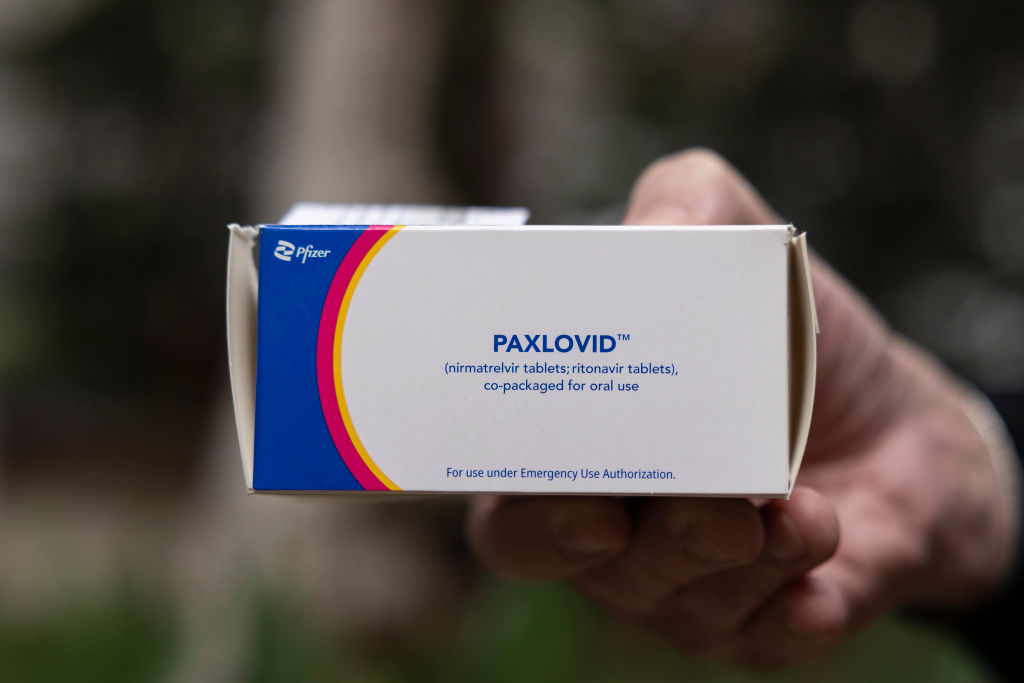The antiviral drug regimen Paxlovid can be lifesaving for people vulnerable to COVID-19’s worst effects, helping them avoid hospitalization or worse if they catch the virus.
But what about adults who are young and healthy? Is there any reason they should take Paxlovid if they catch COVID-19?
Right now, there’s “no proven benefit” to doing so, and even some potential downsides, says Dr. Roy Gulick, chief of infectious diseases at Cornell University’s Weill Medical College. Here’s what to know.
Do low-risk people benefit at all from taking Paxlovid?
Paxlovid—a five-day course of two different pills—is approved by the U.S. Food and Drug Administration for adults at high risk of developing severe COVID-19, such as those who are elderly, immunocompromised, or have underlying health conditions. (It is also available under emergency-use authorization for adolescents with health conditions that make them susceptible to serious disease.) Paxlovid “absolutely works” for these patients, Gulick says, slashing their chances of being hospitalized or dying and potentially shortening the length of their infections.
But studies suggest that people without risk factors for severe COVID-19 are unlikely to benefit from taking Paxlovid. The serious COVID-19 complications it is designed to prevent—namely hospitalization and death—are already rare among people who are young and healthy, and research from manufacturer Pfizer suggests Paxlovid does little to eliminate routine symptoms among lower-risk people. Based on these findings, Pfizer stopped studying Paxlovid among “standard risk” patients in 2022.
For people who are unlikely to get very sick in the first place, “I don’t know that it adds a whole lot,” says Dr. Cameron Wolfe, an infectious-disease specialist at the Duke University School of Medicine.
More From TIME
Even in a 2023 study of Canadian adults who all had some risk factors for serious disease, such as age or health problems, the researchers found that Paxlovid’s benefits were strongest among “extremely vulnerable” individuals, and petered out among people who weren’t quite as susceptible to complications.
That said, deciding who is at high risk is not always simple, Wolfe says. Though he is hesitant to prescribe Paxlovid to someone without any risk factors for severe disease, he’s more willing to do so for people in the gray area—such as a person in their 50s with some health concerns, or someone who is young and healthy but nonetheless had a bad prior case of COVID-19. If you think you may benefit from Paxlovid, it’s best to speak with a physician about your specific case, he says.
Does Paxlovid prevent Long COVID?
Some research suggests that high-risk people who take Paxlovid shortly after catching COVID-19 are less likely to later develop Long COVID symptoms. But the same doesn’t seem to be true within the general population, according to a study published in January 2024.
In the new study, researchers compared a group of about 350 vaccinated people who had COVID-19 and took Paxlovid with a group of about 1,250 vaccinated people who didn’t take the antiviral when they were sick. About the same percentage of people in both groups went on to experience Long COVID symptoms: 16% of those who’d taken Paxlovid, and 14% of those who hadn’t.
Are there downsides to taking Paxlovid just to be safe?
About 20% of people who take Paxlovid later experience “rebound” positive tests, according to one recent study—although it’s possible to have a rebound after an untreated case of COVID-19, too.
Paxlovid also comes with side effects including gastrointestinal upset and a bad aftertaste. In addition, it interacts with some other medications, meaning patients may have to stop taking other drugs while they’re on it. “For people who need it, these [drawbacks] can be managed and the balance favors taking it,” Gulick says. “But for people who don’t need it, there are enough negative qualities of the drug that it should be a very carefully considered decision.”
Finally, the federal government stopped offering Paxlovid for free to everyone in the U.S. on Dec. 15, 2023, meaning some people now have to pay for Paxlovid. It remains free for people who are uninsured or on Medicaid or Medicare, and the government has also partnered with digital-health company eMed on a free test-to-treat program available to all adults.
Are other treatments available for people who are young and healthy?
There are other COVID-19 antivirals on the market, including the intravenous drug remdesivir and the pill molnupiravir. But, as with Paxlovid, they’re intended for people at increased risk of getting very sick, and Gulick says there’s no proof that they help people at lower risk. Molnupiravir is also less effective than Paxlovid, Gulick says, while remdesivir is a more invasive option since it must be delivered intravenously in a medical facility.
“There may be other drugs in the future that we might turn to,” Gulick says. But for now, people without specific risk factors for severe disease are best off staying home, resting as much as possible, and using over-the-counter medications to manage symptoms.

